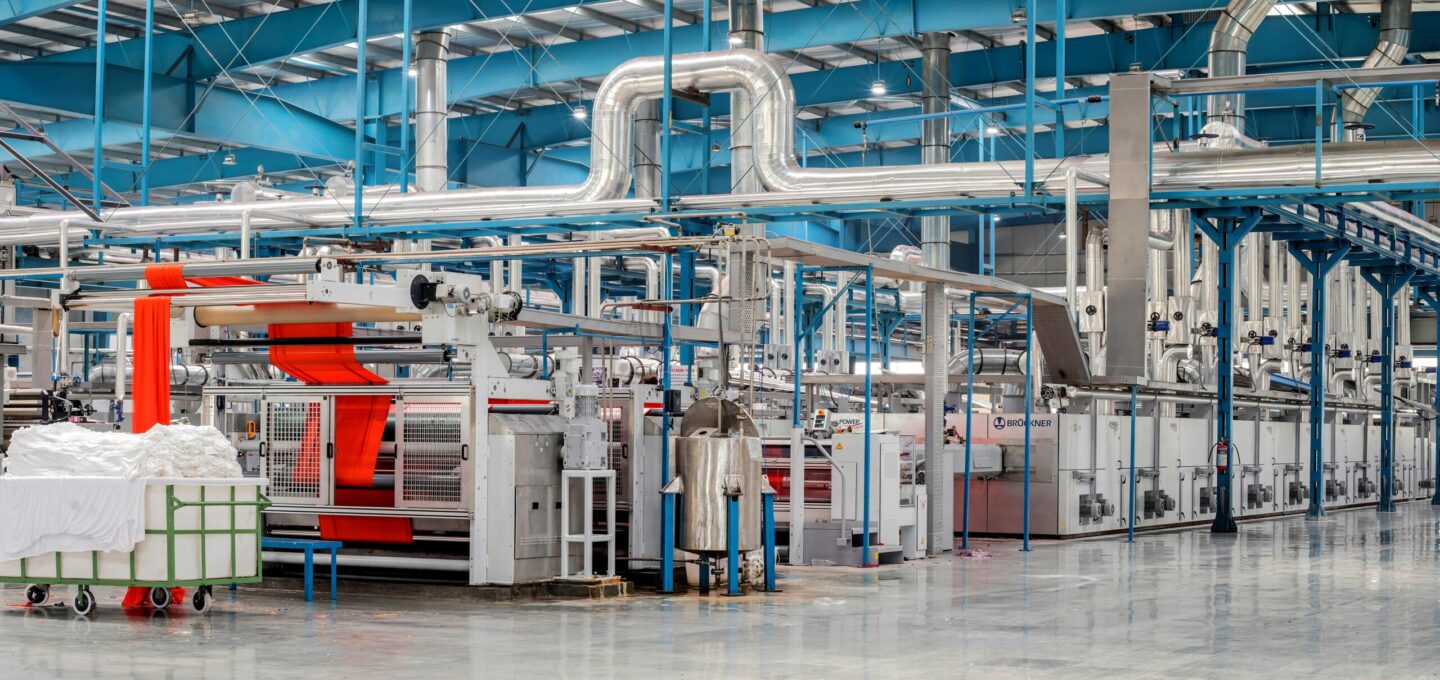Hydrogen sulfide (H2S) is a toxic gas that poses significant risks to both health and the environment. Many industries struggle with efficiently removing H2S from their processes, leading to increased operational costs and potential regulatory issues.
Iron sponge technology can significantly enhance H2S removal efficiency. By understanding these aspects, businesses can improve their operations and ensure compliance while protecting the environment.
Understanding H2S and Its Environmental Impact
Hydrogen sulfide (H2S) is a toxic gas arising from industrial processes, including the production of steel and iron ore. Its presence can pose significant risks in industrial settings, making understanding its dangers essential.
Additionally, the regulatory framework surrounding H2S is critical for managing its impact on climate change with tools like mvseer and protecting both workers and the environment. For more information, contact us.
Defining Hydrogen Sulfide and Its Sources
Hydrogen sulfide (H2S) is a colorless gas known for its distinct odor resembling rotten eggs, primarily produced during the breakdown of organic matter and various industrial activities. Major sources include coal processing, petroleum refining, and biological decomposition within landfills. Understanding the formation and release mechanisms of H2S is crucial in the materials science sector, particularly for developing innovative solutions like iron sponge systems that improve H2S removal during quality control processes in waste management and other applications.
Exploring the Dangers of H2S in Industrial Settings
Hydrogen sulfide (H2S) poses significant dangers in industrial settings, particularly in processes involving methane production and ferrous metallurgy. Exposure to H2S can result in severe health risks for workers, including respiratory issues and even fatality at high concentrations. To mitigate these hazards, the use of materials such as zinc in H2S removal technologies effectively targets the gas while allowing for optimal particle size management, thus enhancing overall system efficiency and safety.
Assessing the Regulatory Framework Surrounding H2S
Assessing the regulatory framework surrounding hydrogen sulfide (H2S) is essential for ensuring compliance and safety in industries that handle this toxic gas. Regulations often focus on controlling emissions stemming from combustion processes and proper waste management to reduce environmental impact. Moreover, the specifications for raw materials used, such as specific grades of scrap metal in metal processing, require adherence to these guidelines to minimize H2S release and enhance the effectiveness of H2S removal systems like iron sponge technologies.
Mechanism of Iron Sponge Technology
Iron sponge technology effectively enhances H2S removal efficiency through its unique composition and functional characteristics, including high porosity and ductility. The chemical reactions involved in H2S removal leverage silicon compounds to facilitate effective absorption.
Let’s compare iron sponge with alternative methods, showcasing practical insights on its advantages within the H2S supply chain and its roles as an efficient engine in waste management applications.
Overview of Iron Sponge Composition and Function
Iron sponge technology consists primarily of processed iron oxide, which is infused with various compounds to enhance H2S absorption. This unique composition allows it to effectively interact with gases produced in industrial settings, such as those found in furnaces that process copper and other metals. In regions like the Middle East, where harsh soil and dust conditions prevail, iron sponge technology offers a reliable solution for reducing harmful sulfur emissions, thus improving air quality and promoting sustainable practices within waste management systems.
Chemical Reactions Involved in H2S Removal
The chemical reactions involved in H2S removal using iron sponge technology primarily revolve around the oxidation of hydrogen sulfide gas. Direct reduced iron is utilized within the iron sponge, enabling the transformation of H2S into less harmful compounds through its interaction with iron oxide. This process not only effectively captures the toxic gas but also minimizes the release of heavy metals and other pollutants common in industrial emissions, promoting a cleaner environment in waste management practices.
Comparing Iron Sponge With Alternative H2S Removal Methods
When comparing iron sponge technology to alternative H2S removal methods, its effectiveness in the chemical industry becomes evident. For instance, in carburizing processes where hydrogen sulfide can accumulate, iron oxide’s unique properties allow for higher absorption rates, making it a preferred choice. Innovations in iron sponge technology not only capture H2S efficiently but also reduce the environmental footprint of natural gas operations, addressing the industry’s need for sustainable solutions.
Enhancing H2S Removal Efficiency Using Iron Sponge
Key factors influencing the efficiency of hydrogen sulfide (H2S) removal using iron sponge include mass and weight considerations, along with optimal conditions for its application. Innovations in iron sponge formulations enhance its effectiveness, particularly when addressing specific carbide interactions.
Understanding these elements will provide insights into maximizing the performance of iron sponge systems in various industrial settings.
Key Factors Influencing Removal Efficiency
The efficiency of hydrogen sulfide (H2S) removal using iron sponge technology is influenced by several key factors, including pressure and the chemical elements present in the gas mixture. Higher pressure enhances the interaction between H2S and the iron oxide, facilitating improved absorption. Additionally, the quantity of iron sponge utilized also plays a significant role; optimizing the amount has proven effective in maximizing H2S removal rates, aligning with sustainability goals observed in companies like Tata Steel, which implement advanced methods to reduce environmental impact.
Optimal Conditions for Iron Sponge Application
Optimal conditions for iron sponge application significantly enhance H2S removal efficiency, particularly when considering the chemical compounds present in the gas mixture. Research indicates that maintaining appropriate temperature and pressure levels allows for greater interaction between H2S and the iron oxide, facilitating effective sulfate formation and maximizing the absorption process. The methodology employed in various industrial setups, such as those involving ore processing, showcases the importance of fine-tuning these conditions to achieve sustainable outcomes in H2S management.
Innovations in Iron Sponge Formulations
Recent innovations in iron sponge formulations have significantly improved H2S removal efficiency, particularly through the integration of nanoparticles. These nanoparticles enhance the reactivity of cast iron, making it more effective in capturing hydrogen sulfide. Additionally, advancements in the crafting of crystal structures allow for better integration of magnetic properties, which helps in optimizing the separation processes in various industrial applications, ensuring a reliable and efficient solution for reducing H2S emissions.
Industrial Applications of Iron Sponge Technology
The oil and gas industry effectively utilizes iron sponge technology for H2S removal, enhancing safety and compliance. In wastewater treatment processes, this technology acts as a reducing agent, efficiently managing sulfur emissions.
Chemical manufacturing applications also benefit from iron sponge systems, particularly in syngas production, where the melting point of the materials plays a crucial role in optimizing carbon reduction. Each process illustrates the versatility and importance of iron sponge in minimizing H2S emissions.
Oil and Gas Industry Utilization
The oil and gas industry relies heavily on iron sponge technology for effective hydrogen sulfide removal, which is crucial for maintaining safety and compliance standards. By facilitating the absorption of hydrogen sulfide from liquid hydrocarbons, iron sponge systems provide an environmentally friendly method for managing toxic emissions. This technology also plays a significant role in sewage treatment processes, where effective reduction of harmful gases contributes to cleaner operations and enhanced environmental protection.
Wastewater Treatment Processes
In wastewater treatment processes, iron sponge technology plays a critical role in efficiently removing hydrogen sulfide from aqueous solutions. By targeting sulfide concentrations, this method not only lowers toxic emissions but also enhances the quality of water before it is released or reused. For industries involved in mining and fertilizer production, integrating iron sponge systems can significantly improve overall operational sustainability while reducing the environmental impacts associated with sulfide consumption.
Chemical Manufacturing Applications
In chemical manufacturing applications, iron sponge technology plays a crucial role in effectively managing hydrogen sulfide (H2S) emissions, particularly in processes utilizing electric arc furnaces. By integrating iron sponge systems, facilities can enhance H2S removal while minimizing the brittleness associated with traditional methods. This technology also assists in reducing carbon monoxide levels during welding operations, ultimately improving overall air quality and safety within the manufacturing environment.
Demonstrating Improved H2S Removal
Success stories in refineries utilizing the h2splus system demonstrate substantial improvements in H2S removal through advanced methods involving calcium and charcoal compounds. Industrial plant implementations reveal how modifications in density and acid interactions enhance removal efficiency.
Insights from these initiatives provide valuable lessons, showcasing the practical impact of iron sponge technology on effective H2S management.
Success Stories in Refineries
Refineries have reported significant enhancements in hydrogen sulfide (H2S) removal efficiency through the implementation of iron sponge technology coupled with magnesium oxide. This combination leverages adsorption principles and enhances machine effectiveness in H2S management. By utilizing innovative catalysts during construction practices, refineries can optimize their processes, resulting in cleaner emissions and improved overall operational sustainability.
Industrial Plant Implementations
Industrial plants have implemented iron sponge technology with notable success in enhancing hydrogen sulfide (H2S) removal efficiency. For instance, facilities have observed improved performance by optimizing particle size and integrating ligands that facilitate better absorption of H2S. These innovations not only reduce arsenic emissions but also support energy storage solutions by maintaining a cleaner operational environment, reflecting advancements that hearken back to the Bronze Age in terms of material effectiveness and innovation.
Lessons Learned From H2S Removal Initiatives
Lessons from H2S removal initiatives highlight the importance of integrating direct reduction processes to enhance efficiency. Techniques such as sintering prove valuable in optimizing the use of iron sponge technology, significantly improving the absorption rates of hydrogen sulfide. By understanding the impact of corrosion on materials used in these systems, operators can implement strategies that ensure longevity and reliability, ultimately contributing to cleaner industrial environments.
Future Trends in Iron Sponge Technology
Advancements in materials and processes, such as the incorporation of cobalt and alloy steel, are enhancing the effectiveness of iron sponge technology for H2S removal. Additionally, the integration of iron sponge with chlorine and redox technologies is improving operational infrastructure while promoting sustainable practices. These developments provide essential insights into optimizing H2S management in various industrial applications.
Advancements in Materials and Processes
Recent advancements in materials and processes for iron sponge technology significantly improve H2S removal efficiency in environments like steel mills. The integration of magnetite and specialty alloys enhances the capacity of the iron sponge, facilitating better absorption of hydrogen sulfide while also contributing to reducing greenhouse gas emissions. As industries aim to lower their carbon footprint, these innovative materials play a crucial role in developing sustainable solutions that effectively manage toxic gases while maintaining operational efficiency.
Integration of Iron Sponge With Other Technologies
The integration of iron sponge technology with other advanced processes, such as those employing wrought iron and specialized catalysts, significantly enhances H2S removal efficiency. By combining iron sponge with systems designed to capture carbon monoxide and reduce greenhouse gas emissions, industries can effectively manage harmful pollutants while optimizing heat and energy use. This synergistic approach not only improves the performance of H2S removal systems but also supports a transition towards more sustainable metal processing practices across various industrial sectors.
The Role of Iron Sponge in Sustainable Practices
Iron sponge technology plays a pivotal role in promoting sustainable practices within the field of metallurgy by facilitating efficient hydrogen sulfide (H2S) removal through controlled chemical reactions. Innovations such as powder metallurgy enhance the effectiveness of iron sponges, improving their capability to capture harmful emissions while reducing the environmental footprint of industrial operations. By integrating advanced casting techniques, industries can develop more effective systems that not only manage H2S emissions but also contribute to cleaner air and healthier ecosystems.

